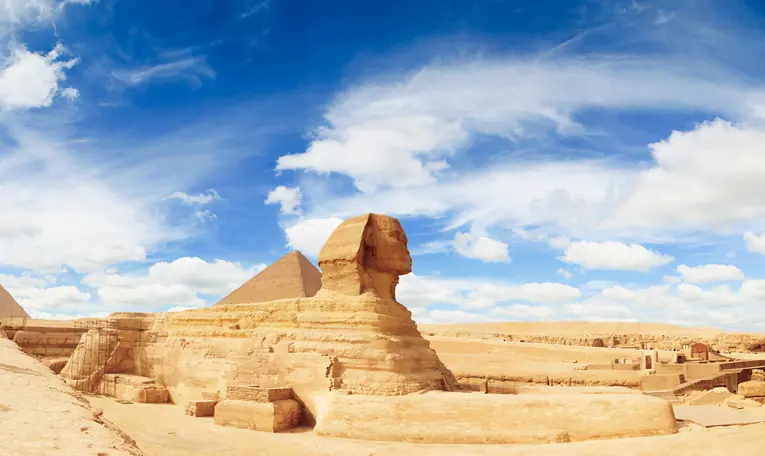Unraveling the True Story Behind the Construction of the Great Sphinx: Scientists Blow the Lid Off the Secret
In a groundbreaking revelation, recent research by New York University has cast doubt on the long-held belief that the winds of the desert sculpted the iconic Great Sphinx of Egypt. Instead, scientists have unleashed a theory that challenges the conventional narrative, shedding light on the true origin of this enigmatic monument in the Giza region.

Sphinx (iStock)
The Natural Shape of the Rock
Historically, historians had presumed that the distinctive features of the Great Sphinx were shaped by desert winds over the course of centuries. However, Professor Lev Ristrov, the lead author of the study, and his team conducted an experiment that created miniature clay sculptures resembling lions using fluid dynamics.
What they discovered was astonishing. It is entirely plausible that the natural shape of the rock inspired the ancient Egyptians to create the Great Sphinx, as reported by the British “Daily Mail.” Ristrov explains that their results present a compelling alternative narrative regarding the formation of structures resembling the Sphinx.
Laboratory experiments revealed that formations closely resembling the Sphinx could be created or molded in reality by materials eroded due to swift flows, supporting the theory proposed by geologist Farouk El-Baz in 1981. El-Baz’s theory suggested that the initial form of the Great Sphinx was flat and gradually eroded by the wind.
The head, paws and body of a sphinx can emerge as water or wind erodes rock, making it possible that the Great Sphinx in Egypt was partly formed through natural processes. https://t.co/alEffuUtpA
— New Scientist (@newscientist) October 29, 2023
A Practical Experiment
To demonstrate this theory, the team used stacks of soft clay mixed with more resistant and less erodible materials, replicating the natural landscapes of Eastern Egypt. They then subjected these formations to a rapid water flow, simulating the effects of wind erosion.
The outcome was striking, with the most durable part resembling the “head” of the lion, and other features such as the “severed neck,” “paws” resting on the ground, and the “arched back” taking shape. Ristrov noted, “Our findings provide a straightforward theory about the formation of Sphinx-like formations through erosion.”
He continued, “Today, there are yardangs that look like sitting or reclining animals, supporting our conclusions.” Additionally, this work may prove beneficial to geologists, as it reveals factors influencing rock formations that are neither uniform nor homogeneous in composition.

The Connection to Pharaoh Khafra?
Most Egyptologists believe that the Great Sphinx represents Pharaoh Khafra. However, there is also a school of thought that attributes its creation to Djedefre, Khafra’s elder brother, as a tribute to their father, Khufu. This could place the construction of the Great Sphinx somewhere between 2550 and 2450 BCE.
Nevertheless, the limited evidence linking the Great Sphinx to Khafra is somewhat circumstantial and mysterious. The Great Sphinx remained concealed until 1817 when an archaeological expedition led by Italian archaeologist Giovanni Battista Caviglia uncovered the beast’s chest. It wasn’t until 1887 that the chest, paws, altar, and plateau became entirely visible.
This revolutionary study challenges long-standing beliefs and offers a fresh perspective on the origins of one of the world’s most iconic structures, the Great Sphinx. The winds of change have blown away conventional wisdom, revealing a hidden narrative that has eluded us for centuries.

